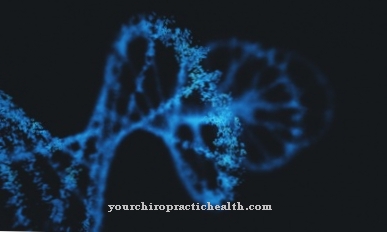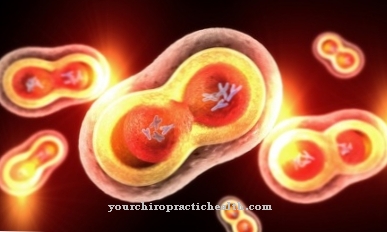The attention is an important function of the body in many ways. It has an impact on human survivability.
What is the attention?

Attention is the turning of thoughts to certain feelings, actions, perceptions or other thoughts. By turning mental activity to it, it represents a protective mechanism for the brain against over-stimulation by external influences.
A distinction is made between fixating and fluctuating attention, with each form being necessary for certain types of stimuli. In addition, attention is divided into auditory, visual and motor attention according to the type of stimulus absorption.
Function & task
Attention has the function of directing brain activity to certain stimuli. In evolutionary terms, this ensured the survival of mankind. The attention directs the perception to certain environmental stimuli, which can thereby be recognized, assessed and processed.
As an example, a Stone Age hunter can be mentioned, whose attention drew the perception to a noise in the thicket, which led to a successful hunt. Likewise, modern societies require human attention. In many situations it is important to quickly perceive a situation, assess it and respond appropriately.
The attention-directed turning of perception protects the brain from overload caused by overstimulation. It has to process a multitude of external and internal stimuli every day. If a person tried to perceive all of them at the same time, meaningful and orderly reactions would no longer be possible. Attention therefore controls perception and directs it to important stimuli or stimuli that appear important at this moment.
In daily life, only things that are relevant to the respective person attract attention. It is possible for two people to perceive completely different things in the same situation: while one observes the beautiful butterflies in the meadow, the other perceives the threatening wasp's nest a few meters further in the same situation.
Advertising makes use of this fact by using key stimuli to arouse attention, for which it has been proven that they attract attention and are thus perceived by a large number of people within the intended target group.
The focused attention is also known as concentration. Here, the perception is aimed specifically at a point, a single stimulus. All other environmental stimuli can be hidden in this situation in order to analyze and process the focused stimulus without sources of interference. This focused attention is often important in learning processes in particular.
In contrast to this is the fluctuating attention. Here the perception constantly wanders from one environmental stimulus to the next in order to quickly grasp and process relevant stimuli. This form of attention is necessary in road traffic, for example, when several relevant situations occur at the same time. The brain has to decide at very short intervals which of the situations are relevant for its own actions and react accordingly.
You can find your medication here
➔ Medicines against concentration disordersIllnesses & ailments
Many different medical conditions can affect alertness. The causes of attention disorder can be harmless and easily remedied, but they can also be serious and incurable.
One of the most widely noticed attention-related disorders is ADHD. However, this is not a disturbance of complete attention. Only the focused attention, i.e. the longer concentration on a certain stimulus, is limited in this disease. In contrast, the fluctuating attention is strongly pronounced, which means that the person concerned is constantly drawn to new stimuli.
Other disorders can also affect alertness. In the event of a stroke or cerebral hemorrhage, for example, the corresponding areas of the brain can be damaged so severely that they can no longer control attention.
Even with dementia, those affected often suffer from attention disorders. Similar to ADD, these express themselves through inattentiveness and absent-mindedness, i.e. through the lack of longer concentration on a certain stimulus.
Likewise, forms of attention disorder can occur with depression. These are expressed on the one hand by a reduced ability to concentrate, on the other hand, the concentration of the person concerned is often directed to their own internal dilemma. Turning away from negative thoughts is very difficult for these patients and often only possible with the help of outsiders.
One of the more harmless and recoverable causes of attention disorder is a lack of vitamins and trace elements. In particular, the B vitamins and the trace element iron are often mentioned at this point. If the body is adequately supplied with these substances, i.e. through a change in diet or dietary supplements, this form of attention disorder is easy to treat, in contrast to the organically induced ones.
Low blood pressure can also negatively affect alertness due to reduced cerebral blood flow. If this cause is eliminated, the ability to concentrate also increases again.
If one also differentiates in attention according to the way in which the stimuli are absorbed, further differentiations of the attention disorder are possible. Not all areas of stimulus absorption are always equally disturbed. There are patients who can deal with an auditory stimulus over a longer period of time without any problems, but whose visual perception is clearly restricted.
























.jpg)



